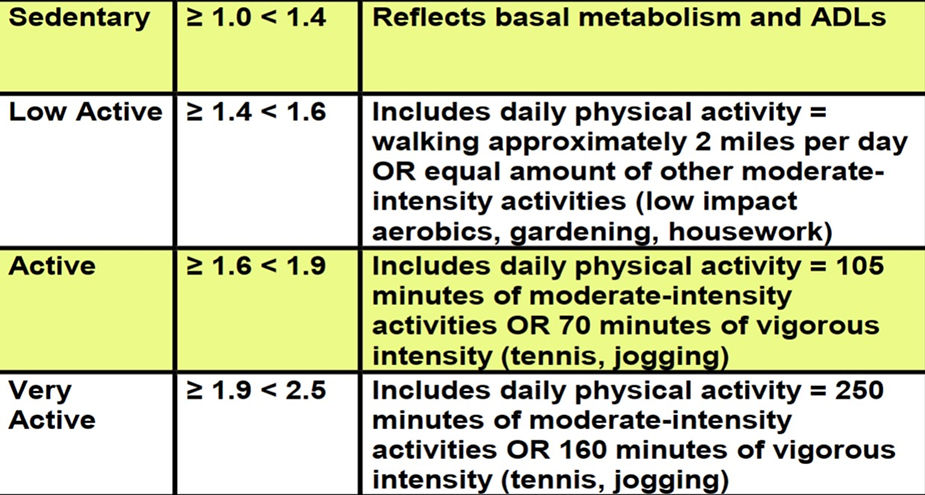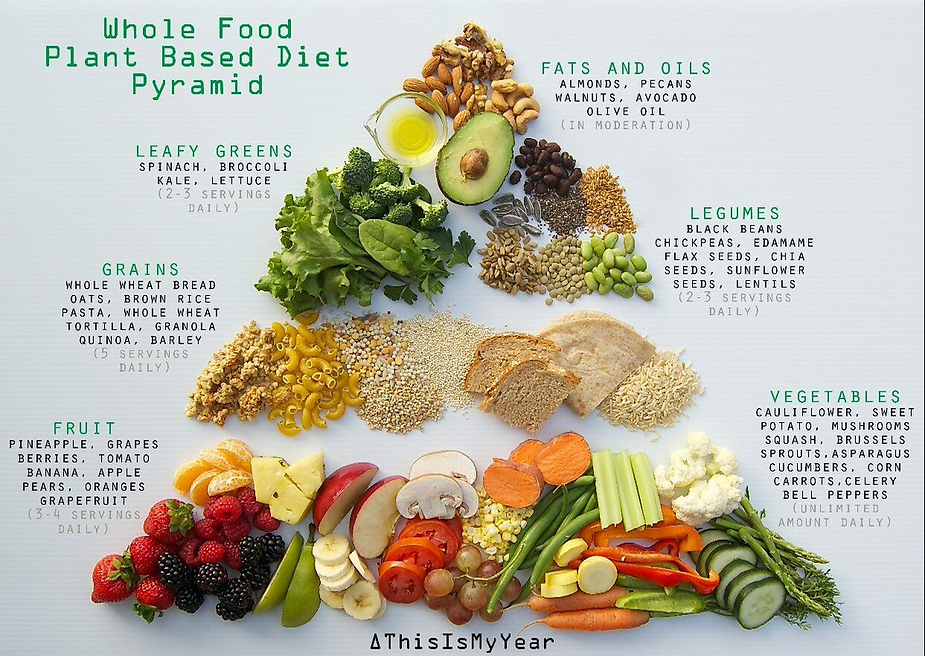In short, nutrition is the ability to provide nutrients to our bodies that are necessary for our health and growth. Now for the long answer, nutrition is a very diverse topic with many categories. In this post, I want to focus on the importance of food and what they are composed of that makes them so nutritious. Also, why picking certain ones is of the utmost importance to our health.
For our bodies to function we need to eat a certain amount of calories to meet our metabolic needs; this is known as our resting energy expenditure (REE). On average this range differs in individuals based on age, weight, height, and sometimes gender. Men usually have a higher REE compared to women. Women’s REE is usually around 1,500-1,600 kcals. WAIT, did I just say 1,500 kcals?? Does that sound like too much? Not only is this amount too little for what people need every day but this value is the bare minimum for your body to function properly. You may be asking, well how do I know what mine is? The best assessment to assess for REE is the utilization of a MedGem, but this is hard to gain access to. So instead I will provide an equation for you to calculate it yourself: the Harris-Benedict Equation. There are several REE equations that individuals can use but this is most accurate for healthy, well-nourished people.
Harris Benedict Equation:
Men= 66.5 + 13.8 x Weight (in kg) + 5.0 x Height (in cm) – 6.8 x age (in years)
Women: 655.1 + 9.6 x Weight (in kg) + 1.9 x Height (in cm) – 4.7 x age (in years)
Now that you have calculated your REE you now know how many calories you need to consume for your body to function daily. Now, what about physical activity and other activities I do throughout the day? I am so glad you asked. This is where we turn our focus to a term known as total energy expenditure (TEE). In short, this is the number of calories we should really be consuming every day. To now calculate this we will utilize the REE we calculated earlier and multiply it by an activity factor. Isabelle. What the hell is an activity factor? I know. I know. I keep saying things that probably sound like gibberish but bear with me this will come full circle. Below is a diagram explaining what activity factors are so you can pick what category you feel is most applicable to you.

On average, a healthy individual should be consuming around ~2,000 kcals/day. Fun fact time! Next time you look at a nutrition label, below all the values, it will say in fine print that the daily values included are based on a 2,000 kcal consumption. Now see the FDA didn’t get this number from anywhere. They got this from calculating on average what TEE (kcals) people in the US population should be consuming every day. Crazy right?
Anyways, the point of doing all this math is to get an estimate of how much you should be consuming in calories each day. Where the hell do calories come from? Everyone scream this answer with me: FOOD!!!!! This is why it is so important to know this number; it gives you an estimate of how much food is enough and then how much is too much. Now to get into the nitty-gritty. How are calories calculated in food items? Food is composed of macronutrients and micronutrients.
| Macronutrients | Micronutrients |
| Carbohydrates | Vitamins (Fat and Water Soluble) |
| Protein | Minerals |
| Fat | |
Here we are going to focus on macronutrients since these are what make up the calories you see in food items. Macronutrients in food include carbohydrates, protein, and fat. In other posts, I will discuss the importance of all the groups but as of now, I’m focusing on it in relation to consuming calories. Carbohydrates per gram provide 4 kcal, so if there is 5g of carbohydrates in a food item it is providing 20 kcal within that food item. This is the same for protein. Protein per gram provides 4 kcal as well. Yet for fat, per gram, it provides 9 kcal. You may be thinking well I’ll just lessen my fat intake since it’s providing me more calories in my diet. Please don’t do this. Fat is so so so so so important for our bodies and so many people today have a misunderstanding of fat. Fat is not bad. Overconsuming fat is what gets individuals into trouble and also not consuming the fat that is better for our bodies. Yet if you consume whole foods like grains, fruits, vegetables, and dairy, you won’t have to worry about this. Again though I will be posting a whole other blog about this going into greater detail (the link will be attached here when posted!).
Now with this knowledge we can finally know what good nutrition is. To ensure we are eating enough, we want to consume the TEE calculated earlier and consume the correct amount of macronutrients each day. For carbohydrates, you want to consume 45-60% of TEE per day. Protein is 10-35% of TEE and fat is 20-35%. How do I know what foods to eat that will be composed of this? If you consume whole foods each day and do not consume highly processed foods, you will be in great shape. Whole foods are rich in these macronutrients (our energy source) that our bodies need to function but also micronutrients to support our bodies. Below I will include an easy diagram to see if you are including these in your daily diet.

Now that I have blurted out this information I want to also address that I understand we all have super busy lives. Using whole foods is highly inconvenient for us and that’s why we resort to processed foods. If you want to think of anything processed, imagine anything packaged in a grocery store. This is processed. So since I know how hard it is to include these within our diets I want to relay some recommendations I do within my life so you could include some of them too!
- Meal prep: meal prepping allows you to take a couple of hours in one day to make dishes composed of whole foods ahead of time so you can quickly reheat them for when you don’t have the time.
- Shop locally: first, this is great for the environment and now second, when you shop at local stores/farms you are not as distracted by all the processed foods. This not only forces you to buy whole foods but helps the environment at the same time.
- Make a grocery list and STICK TO IT: this is key. When I make a grocery list I am able to think ahead of the nutritious foods I want to eat, I am also able to just go in and grab the items, and then I am able to get the hell out before I buy anything else not on my list.
- Prioritize: this one is honestly the most important recommendation I could ever tell someone. When we do not prioritize the time we put into the foods we eat, by either not spending the time to shop and look for them or by not taking the time to prepare them, we are jeporadizing our health. We are missing out on important nutrients that can help prevent disease from just not taking time out of our days to make food a priority. More importantly the food in which we are consuming a priority. Food is what fuels our bodies and helps to keep us functioning. So to make sure they are functioning properly and to their fullest potential we have to fuel them right! Think about it this way, if you are driving a Lamborghini (your body) are you going to put regular gas (processed foods) into it? Hell no. I am going to put premium gas (whole foods) into my car not only so it functions correctly but because I also want the car to last.
Quality content.